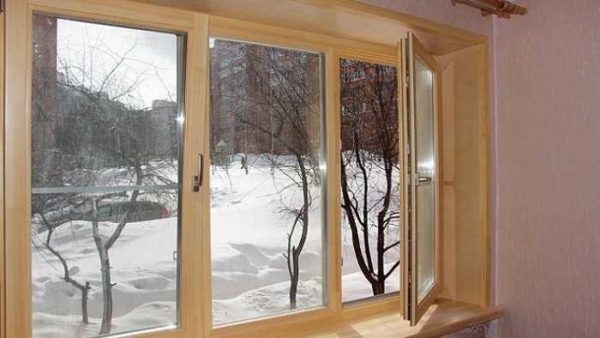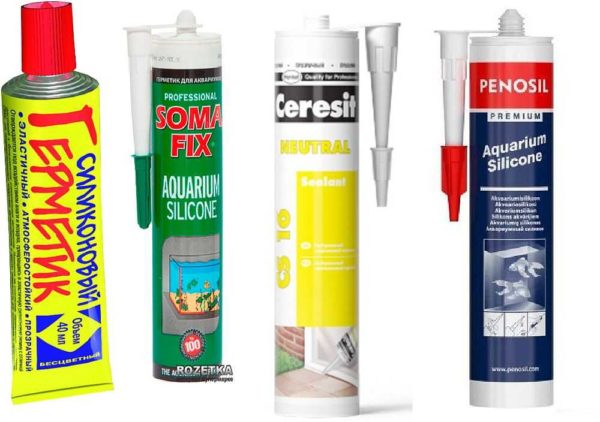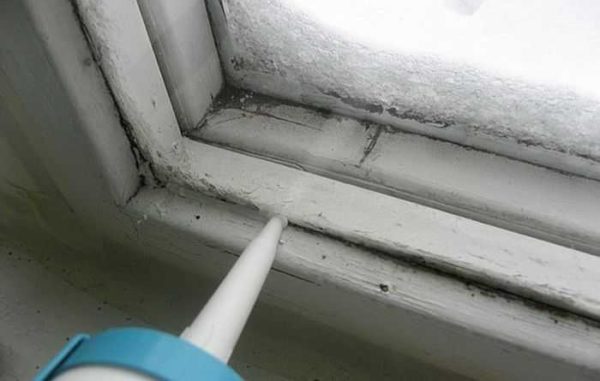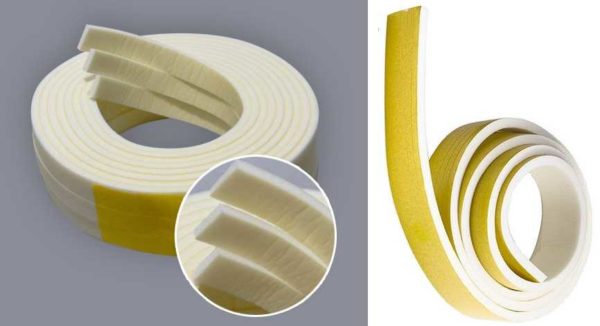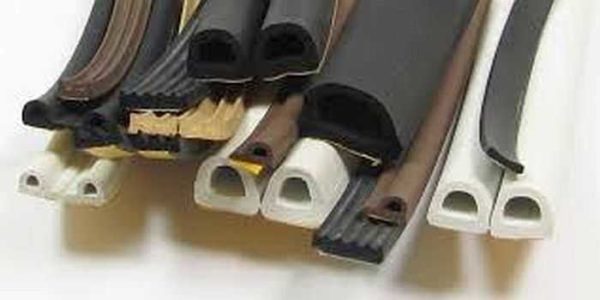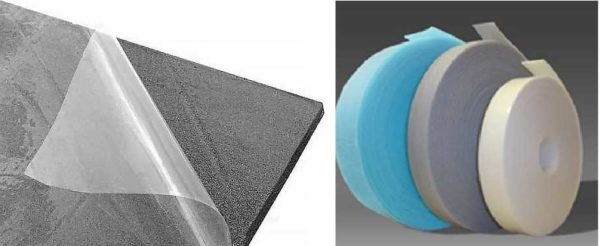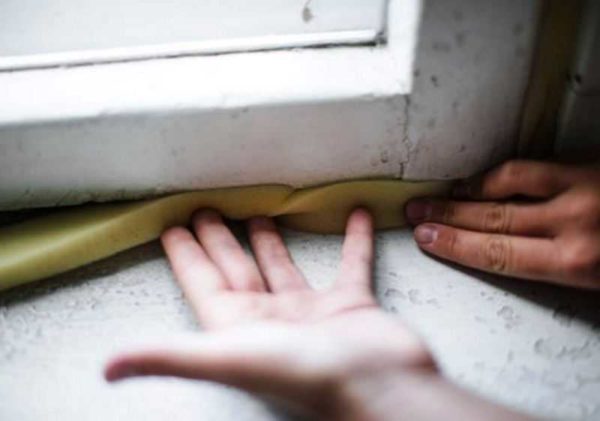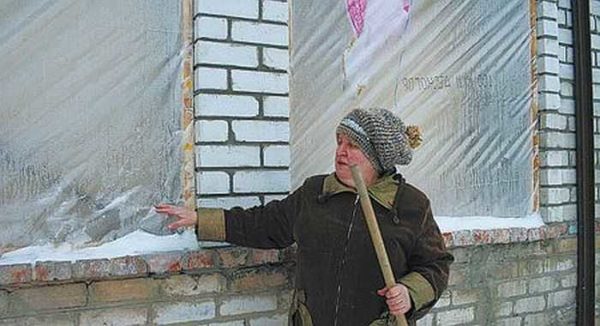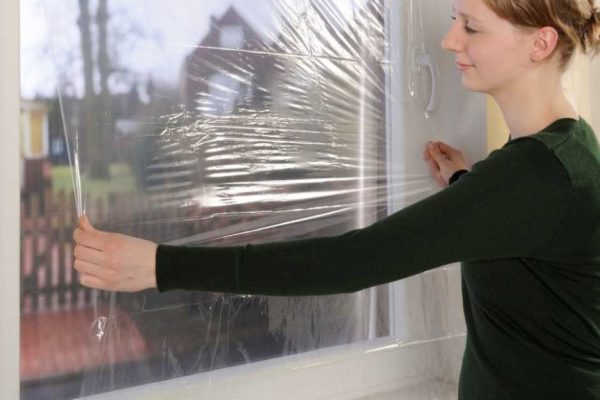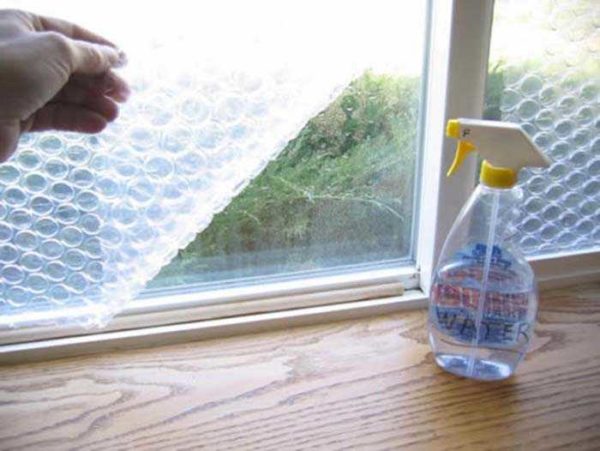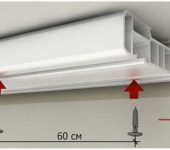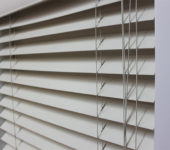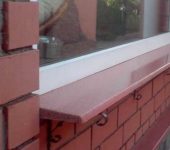How to insulate old wooden windows for the winter
Wooden frames are much more environmentally friendly than plastic ones, but such windows require regular maintenance. One of the necessary items is window insulation for the winter. No matter how well the wooden frames are made, over time they dry out, and drafts appear in the house. In order not to drown the street, the cracks must be repaired.
The content of the article
Cardinal insulation of wooden windows
It can blow from wooden windows into the cracks between the glass and the frame. This "disease" is treated separately. Another possible source of cold air is sash loosely fitting to the frame. For a good and long-term effect, it is better to insulate wooden windows in two stages. First get rid of the blowing from under the glass, then minimize the cracks in the frames. Such insulation is guaranteed to give a good result. It is worth starting insulation with the installation of glass on silicone, which came to replace the old putty, but it works much better, retains its properties longer.
Glass sealing
To reduce the blowing out of heat through windows, glass should be installed without gaps. The most effective way is to use a sealant. The glass will need a transparent silicone sanitary sealant. You can take not sanitary, but for aquariums. It differs in that fungus or mold never appears on the surface. And this is possible if the windows "cry". When buying, pay attention to the temperature regime of use - it should withstand the minimum temperatures for your area without problems. Then the insulation of wooden windows will be effective.
To make it easier to work, it is better to remove the frame and carry out all the actions on the table. Why shoot? You will have to take out the glasses. If the window is really old, without glass, the frame may warp. Then you still have to remove and align it, and this is not at all as easy as it seems. So it's better to remove the sash after all. Further, the procedure is as follows:
- remove the old glazing beads;
- we separate the glass, clean it from putty, dust, degrease around the edges;
- we clean the frame from paint and everything that can fall off;
- put a strip of sealant on the ledge of the frame for installing the glass;
- we lay glass, press;
- we leave for several hours - until the sealant polymerizes (the time is indicated on the package);
- we take new glazing beads, nail them into place.
If time is running out, you can not wait for the sealant to polymerize, but immediately install the glazing beads. The north window can be made even warmer - pass under the glazing bead with a sealant. The result is a double sealing of the glass. Also do if the wind is constantly blowing into it.
Let me give you one piece of advice: if you see that the frames will soon fall apart, reinforce the corners with overhead corners (at least). This will allow the frame to hold its shape more rigidly and new gaps will not appear for at least several years.
Thermal insulation of wooden windows without glass sealing will not give the desired effect. Tested many times, and not only at home. My son had the coldest class in school. After the glass was put on a sealant and new glazing beads were installed, it became much warmer. The class has become almost the warmest. Try it. It really works.
How to close the gaps between the frame and the sashes
Very often, old wooden windows have gaps between the frame and the sashes. It blows out the heat into these cracks.To avoid such a situation, these gaps are laid with a seal. There are modern materials for sealing:
- Sealed foam rubber on a self-adhesive base. Strips about a centimeter wide are sold in skeins or meters. The denser ones are those that are by the meter. They will better protect against drafts.
- Rubber seals of various shapes on an adhesive backing. There are two main profiles - D and F. They come in different sizes. They are used depending on the size of the slots and the type of rebate. The D-profile is more elastic, it is placed where there are large gaps. The F-profile is needed where the gaps are not too large.
The self-adhesive base of any seal allows you to quickly and easily stick it on the frame, but after a while, the glue stops holding and the tape comes off. It is necessary to change the seal. With foam rubber, this is not too annoying - it costs a penny, but the rubber seal is quite expensive. To prevent this from happening, after installation, secure the seal with staples from a construction stapler. You will need to pick up staples of sufficient width with long legs. Better stainless or copper, as steel will rust. The staples are placed in 20 cm increments, more often in the corners. If it becomes necessary to replace the rubber seal due to loss of elasticity, the staples can be easily removed with a regular screwdriver.
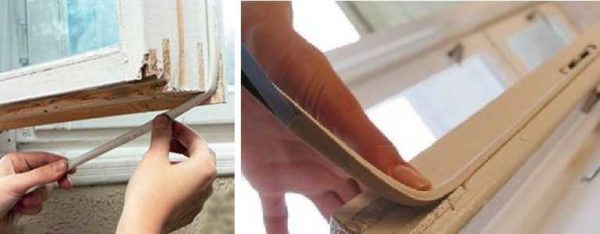
You can glue the seal both to the frame and to the sash. It is important that the window closes normally and does not blow
It is necessary to glue the seal on the place of the frame to which the sash adjoins. It's easier and more convenient. The thickness is selected according to the size of the gap. Strongly thick can interfere with closing the window, thin - will not give tightness. And one more thing: when gluing with a rubber seal, leave small gaps: two in the vertical and one in the horizontal. Otherwise the windows will “cry”.
How else to insulate windows
Other materials can be used instead of foam or rubber seals. Thermal insulation of wooden windows can be done using:
- Foamed polyethylene. It is on an adhesive basis, there are just rolls of insulation. How to mount the glue is understandable, and ordinary roll insulation is cut into strips of the required width. You can attach it to buttons or staples from a construction stapler. This option is good because you can "cut" strips of the desired width.
- Use polyurethane foam. If you are not going to open the window during the winter, you can fill the gaps with polyurethane foam from a can. They blow in a very small amount, and the foam is also needed with a small expansion, otherwise it can squeeze out the frame. After polymerization, the excess is cut flush with the frame, and then you can either paint or glue it with paper. It depends on how you plan to use the window in the future. The disadvantage of this method is that the foam cannot be torn off without damaging the paint.
- Grease the mating points of the frame and sashes with silicone sealant, but white. We will get an individual sealing tape that will ideally fill the gaps. But, again, the silicone comes off along with the paint. In principle, it is possible to apply the sealant to one of the parts "dry" by degreasing the surface. Grease the second part with something greasy (the same vegetable oil, for example). Close the window, wait for polymerization. Then we open the window, we have a strip of sealant that almost perfectly follows the contours of the adjacent sash.
The above two last methods of window insulation cannot be called humane. There is a high probability that the varnish or paint will be damaged and in order for the window to have a normal look, it will have to be repainted or varnished over a new one.
What else can be used for insulation
Other materials can be used to insulate wooden windows. For example, to eliminate gaps between the frame and the sash, use:
- cotton wool twisted into bundles;
- foam rubber strips;
- a plait made of fabric.
This window insulation is called the "grandmother's" method. This is exactly what they did (and continue) when they had not heard about plastic windows. These materials are twisted into a tight bundle and, using a screwdriver or a table knife, pushed into the slots. It is more convenient in this regard to work with foam rubber - it is pushed into any cavities.
Then, in order to finally block the access to air, a strip of paper or fabric is glued on top. Paper or cloth can be moistened in paste (dilute 1 spoonful of flour or starch in 2 tablespoons of cold water, add a little boiling water, put on low heat, boil, stirring for transparency). The paste can be replaced with soaked household or cosmetic soap. You can simply put a bar of soap in warm water, run it with a cloth or paper over the soaked part and stick it on the frame. After drying, paper and fabric become much denser, almost impermeable to air.
If the "grandmother's" method of insulation does not please you, you can use construction (paper) tape or paper for gluing windows with an adhesive applied on one side. It turns out the same, but a little more expensive. But less "fuss". But construction tape sometimes comes off badly - with pieces of paint. And the "grandmother's" method can be removed without problems and even paint that does not adhere very well remains in place.
Insulation of windows outside
Sometimes the glass is "planted" on silicone, all the cracks are sealed, and it blows from the window. This means that the insulation has become unusable, with which a gap was laid between the wall and the window frame. To do everything thoroughly, you need to get to the insulation and change it. It is long and difficult, as the frame can be broken in the process. It is faster and easier to use polyurethane foam. Foam, again, is better to take with a weak expansion. It can be found, although it is not often found. Walk around and purposefully look for a balloon where it says - weak expansion. Those that are commonly sold can extrude / warp the frame. This will not help, but will only worsen the situation.
By examining the frame around the perimeter, you can find holes. Most often, a significant gap is found under the ebb. They can be on the sides and on top, but here usually either the slopes are standing or plastered. If it can be seen that the plaster has fallen off or there are obvious voids under the slopes, it will be necessary to provide access in some way. It is difficult to tell how exactly - it must be decided locally.
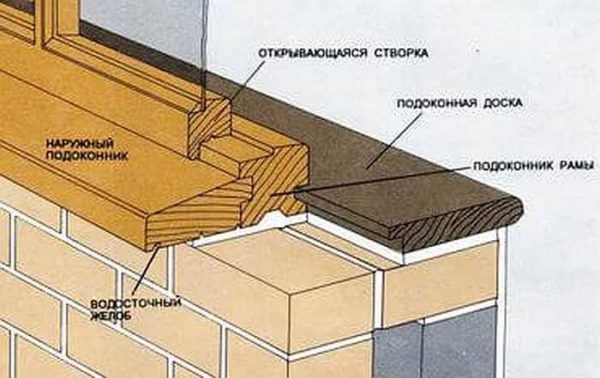
If the seal under the windowsill has become unusable, it is better to fill the void with polyurethane foam
After gaining access to the cavity, proceed as follows. Clean out everything that is possible, remove everything that falls off and crumbles. Moisten the cavity with water from a spray bottle. Blow gently with foam in layers. If the hole is too large, do not apply a lot of foam at once. Better to apply it in layers, waiting for each layer to polymerize.
When filling, do not overdo it - polyurethane foam with a weak expansion should fill the void by no more than 2/3 (with a normal or strong one several times less). Leave it until polymerization (the time is indicated on the bottle). After the polyurethane foam has become tough, cut off the excess, paint to achieve tightness. Such insulation of wooden windows will allow you to avoid drafts for a long time and keep warm.
We tighten the film
If you have carried out all possible types of work, and the room is still cold, you will have to use an extreme method - to tighten the window with a film. Yes, ugly. But it is better not very nice, but warm. This method is usually used for windows facing the backyard. We take a dense transparent plastic wrap, stretch it from the outside onto the window, securing it with planks from the street. Not the most aesthetic window insulation, but effective.
Why does this method work? Because an additional insulating air layer is created - between the film and the outer glass.This is the first moment. The second is this. Since the film is usually nailed to the walls, it turns out that cold air does not penetrate to the frame.
Energy saving film
The same effect - an additional insulating layer - also works in the case of the recently advertised thermal insulation of window panes with a film. As you know, any room loses heat through walls, windows, roof, floor. Windows account for up to 40% of heat losses. Previously, this problem was solved by installing additional winter frames. Heat-saving film, in fact, is a modern substitute for such a frame. A thin double-sided tape is attached to the window frame, and a film is glued to the tape. How smooth is not the point. It must be warmed up with a hair dryer (ordinary, not building), after which it will level out and be unobtrusive.
This simple method allows you to raise the room temperature by a few degrees. The same film will prevent overheating in the summer - prevent the sun's rays through the glass. The only disadvantage of this method is the inhumane price. A square meter of film costs from 350 rubles, plus you will need double-sided tape.
Is this energy efficient film different from the usual one? It is difficult to say until comparative tests were carried out. Will anything change if you tighten the window with ordinary plastic wrap? Unlikely. The advantage of this film is that it is crystal clear and invisible on the window after heating. So this is a relatively inexpensive and easy way to raise the temperature in a room without spoiling the view from the window.
Cheaper way
Almost the same effect can be achieved if a packaging film with air bubbles is glued onto the glass from the inside. Of course, using this film, we lose transparency, but the price is not so high either. The film is generally very easy to mount. A piece of film cut to the size of the glass is moistened with water (from a spray bottle). Water is applied to the smooth side. We spray it on glass as well. We lay the film, level it, press it, straighten it with our hands. Everything, the film is glued.
It can last for months. It can be removed without any problems - they pulled the edge, and all of it moved away. One and the same piece can be used for several years, since nothing happens to it. This is a simple method that makes the insulation of wooden windows more efficient.

